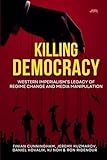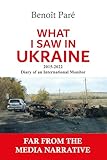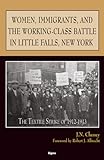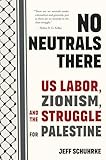The word “fascism” is a lightning rod. No one wants to be called a fascist. Everyone is ready to call someone else a fascist.
Like many highly charged words, the more common its usage becomes, the more inexact its meaning becomes.
Today, Trump is a fascist, Putin is a fascist, Modi is a fascist, Radical Islam is Islamofascism, the House and Senate members who passed the FISA renewal are fascists, Ukraine is a fascist country, political correctness is fascism, anti-Zionists are fascists, Zionists are fascists, and so on….
Clearly, the word “fascism” in these contexts is most often an expression of extreme disapproval– a kind of expletive.
A problem arises when the claimant– the person using the word– has something more definite in mind, something more exacting. A problem arises when the user of the word intends to draw an association with the real, historically concrete phenomena of fascism that emerged in the aftermath of World War I and rose tragically to ravage and terrorize nearly the entire world.
The idea that people or organizations are preparing to organize Blackshirts, Brownshirts, Silver Shirts or whatever to intimidate or overthrow conventional political processes is understandably reprehensible. But to conjure such an image in order to influence the political process, though without sufficient warrant, is misleading.
In a highly charged political context, it is not only misleading, but also unhelpful, and even incendiary.
Even a policy as sanctified by much of the left as the New Deal has been called fascist, proto-fascist, or fascist-tinged by commentators from across the political spectrum. And the “sainted” FDR has been labeled fascist by many. Critics from both left and right have seen parallels between elements of the New Deal and Mussolini’s corporatism. Still others have found similarities between the Rooseveltian Civilian Conservation Corps and Hitler’s German Labor Services. Since the New Deal was a mish-mash of trial-and-error pragmatism, it is a disservice to wed it with any particular ideology.
Of course, “fascism” depends on how we define it. Problems of definition arose immediately after World War II and the defeat of the major fascist powers. The emerging Cold War led to the US and its allies accepting a narrow definition when it came to new-found allies among former Nazis and Nazi collaborators. In its conflict with the Soviets, US leaders relied on Germans and Eastern Europeans with dubious, fascist ties to advance weapons programs, utilize intelligence, and bolster anti-Communism. Vetting of fascists by ideology was a haphazard process at best.
On the other hand, attempts to link fascism to Communism was an ongoing project. Determined efforts to find common features to justify anti-Communism led to a construct called “totalitarianism.” Popularized by Hannah Arendt, Cold Warriors wanted and got a tally of supposed similarities that served their purposes and served to generate a common definition of two disparate ideologies.
Thus, the Cold War created both a narrow and broad interpretation of fascism– one for practical purposes, the other for propaganda purposes.
As the Cold War warmed in the 1980s, academics like Stanley Payne (Fascism, Wisconsin, 1980), made attempts at more independent, nuanced, and objective definitions of “fascism.” Payne engaged in comparative historical analysis and arrived at his typological description of fascism. Unfortunately, it suffered somewhat from raw empiricism and a failure to properly weigh the factors disclosed. To its credit, it undercut the Cold War conflation of Communism and fascism by emphasizing anti-Communism as a common feature of fascism, and not conflating it with Communism.
Further, Payne in 1980 recognizes the historically met concept of “liberal authoritarianism” — a form of illiberal liberalism– that might serve to explain much of the confusion of our anti-Trump left today, who are anxious to dispense with the Bill of Rights to save “our” democracy.
In a recent essay regarding the “fascism is eminent” fashion of today, noted liberal commentator, Patrick Lawrence, riffs on the concept of “liberal authoritarianism.” Lawrence declares in his article “This Isn’t Fascism,” posted on Consortium News, that “I cannot quite tell what people mean when they speak of fascism in our current circumstances. And [as] far as one can make out, a lot of people who use the term, and maybe most, do not know what they mean, either.”
Unfortunately, while Payne still serves as a keystone for contemporary Western academic scholarship, the old Cold War conflation of Communism and fascism has resumed, particularly under a new wave of retro-Cold Warriors like Anne Applebaum and Timothy Snyder.
But more consequentially, the charge of fascism — invoked irresponsibly — has served as a weapon in electoral politics. Specifically, many in the Democratic Party — bereft of an appealing program — charge that a vote for Biden is a vote against fascism. Given that Biden’s failure on inflation and his bloody war-mongering are rejected, especially by youth and the Party’s left wing, portraying Trump as a fascist is an act of desperation, but an act that will ultimately do little to forego the rise of Trump and his ilk.
Again, invoking Lawrence:
Much of this, let’s call it the pollution of public discourse, comes from the liberal authoritarians. Rachel Maddow, to take one of the more pitiful cases, wants us to think Trump the dictator will end elections, destroy the courts, and render the Congress powerless. The MSNBC commentator has actually said these things on air.
One-man rule is the theme, if you listen to the Rachel Maddows. The evident intent is to cast Donald Trump in the most fearsome light possible, as it becomes clear Trump could well defeat President Biden at the polls come Nov. 5.
We can mark this stuff down to crude politicking in an election year, surely. There is nothing new in it. But this is not the point.
Opportunistic voices on the left will often draw a crude analogy with the rise of Nazism. They argue the simplistic and false case that disunity on the left opened the door for Hitler’s ascendency to the Chancellorship of Germany in 1933. They repeat an old whitewash of history — dismissing Hitler’s backing by the German capitalists, the perfidy of the weak government, and the betrayal of the Social Democrats. They ignore the economic crisis, the rulers’ failure to address the crisis, and the peoples’ desperate search for a radical answer to that failure. An unquestionable sign of that desperation was the continuing growth of the votes for the Communist Party, along with the decline in votes for the Social Democrats, and other centrist parties.
Nazism was not inevitable, but ushered in on a fear of revolution, of workers’ power, by a despairing ruling class. That was the reality wherever fascism seized power in twentieth-century fascism.
Today, the answer to a deepening crisis of capitalist rule that is losing its legitimacy in the eyes of the masses is not rallying support around the failed policies that created and deepened the crisis. The answer is not to cry wolf or remind the people that matters could get worse. They know that!
The answer is to develop real answers to the despair facing working people– reducing inequality, raising living standards, guaranteeing health care, increasing social benefits, improving affordable public transportation, protecting the environment, improving public education, and so on. These issues have existed for many decades, worsening with each passing year. There is no mystery. We are offered only two parties and they are determined to evade these issues.
Lawrence makes a similar point:
I suppose it might make America’s many-sided crisis — political, economic, social — more comprehensible if we name it [fascism] to suggest it has a frightening antecedent. But this is profoundly counterproductive. So long as we, some of us, go on persuading ourselves we face the threat of fascism or Fascism, either one, we simply obscure what it is we actually face.
We name it wrongly… I do not see fascism in any form anywhere on America’s horizon. To call it such is to render ourselves incapable of acting effectively.
But that still leaves us with the question: What is fascism? Is there no cogent definition?
Indeed, there is one that springs forth from a deep and thorough study by the late Marxist thinker, R. Palme Dutt. Published in 1934, soon after Hitler’s rise to power, Fascism and Social Revolution (International Publishers) locates fascism in the cauldron of the rise of Communism, a deep economic crisis, and the collapse of capitalist class legitimacy.
Dutt, unlike servile academics weaving a bizarre, historically challenged link between Communism and fascism, discovers direct ties between capitalism and fascism (p. 72-73).
Fascism manufactures its ideology around its practice. Dutt explains:
Fascism, in fact, developed as a movement in practice, in the conditions of threatening proletarian revolution, as a counter-revolutionary mass movement supported by the bourgeoisie, employing weapons of mixed social demagogy and terrorism to defeat the revolution and build up a strengthened capitalist state dictatorship; and only later endeavoured to adorn and rationalize this process with a “theory” (p. 75).
Dutt’s operational definition contrasts favorably with the failed attempt by writers like Payne who attempted to engage comparative studies in order to arrive at a superficial typography of fascism.
Dutt further adds the class dimensions, absent in nearly all non-Marxist definitions:
Fascism, in short, is a movement of mixed elements, dominantly petit-bourgeois, but also slum-proletariat and demoralized working class, financed and directed by finance-capital, by the big industrialists, landlords and financiers, to defeat the working-class revolution and smash working-class organizations (p. 82).
Elegant in its simplicity, robust in its comprehensiveness, Dutt’s explication of fascism aptly characterizes historic fascism from the march on Rome to the Generals’ coup in Indonesia and Pinochet’s regime in Chile. When social conditions deteriorate drastically and workers and their organizations threaten the capitalist order, the rulers throw their support behind counter-revolutionaries prepared to defend and strengthen the capitalist order, even at the expense of bourgeois democracy.
These institutions and organizations fester within bourgeois society as latent counter-revolutionary forces ready to be unleashed at the right moment by a desperate capitalist ruling class.
Clearly, Dutt’s study and elucidation of fascism clears the muddy waters stirred by today’s alarmists and opportunists. There is no imminent threat of revolution; the revolutionary left and the workers’ organizations currently pose little threat to the capitalist order, unfortunately.
There is no emergent organized mass movement responding to a counter-revolutionary call. The mass movements of the right — the Black Legions, the KKK, the Proud Boys, the militias, etc. — do exist, should conditions ever ripen for a mobilization against the working class; but for today, they remain unacceptable to most of the ruling class.
For the most part, the capitalist class, especially its dominant monopoly sector, is satisfied to conduct its business within the confines of bourgeois democracy. “Finance-capital… the big industrialists, landlords and financiers…” defend and protect the two-party system because they regard it as functioning adequately, though the “lawfare” attacks piling up on Trump and the rabid media attacks against him show that an important section of the ruling class considers his unpredictability to be a threat to stability.
Others think that his buffoonery and bluster serve as a safety valve for the discontent infecting the citizenry, much as Berlusconi’s clown-act pacified and entertained Italians unhappy over their political fate for three decades.
In any case, Trump does not pose the threat of fascism that many would like us to believe.
We need to find other words to describe the deep crisis of bourgeois legitimacy that we are enduring, words that do not force us into a frenzied defensive posture that deflects us from finding real solutions to a real and profound problems facing working people.










